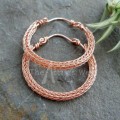
Far from wanting to write an article 10 years out of date, I will start with some well-worn facts and move on from there. The online art market is huge; the online art market currently stands at around £1.57 billion and is set to double in the next three years.
Unlike selling other art forms online, the sale of fine art doesn’t creep up and destroy the lower end of a traditional market – sales of masters and high-end pieces remain strong and online trading serves both new buyers and new sellers as well as opening new avenues for veteran collectors. As a very basic description, online art sales are an evolution of a traditional market because the art object is still what is traded – it hasn’t been digitalised like books, music or film.
And so the question is posed: why do people go online to buy art?

You can do it in your pants
As an artist selling online, you do not have a geographical location and neither does your buyer. In yesteryear, there was great art by younger artists being bought, collectors were discovering emerging talent at charity auctions and degree shows, and now the trend has been set to discover new artists online. No longer does your potential buyer have to traipse around after you, you can meet in the middle, at your studio, in the kitchen, university, Starbucks, or anywhere you can steal Wi-Fi.
It is quick and easy
Along with casting aside the shackles of set locations and time zones, so the tradition of conversing through a gallerist has gone too. Make sure your information is up-to-date because you have every opportunity for it to be. Don’t make it difficult for people to contact you – stick to simple email addresses and check them regularly. A buyer may not be able to inspect an artwork before buying so remember that if they ask questions then they are interested in it.

Network your sales
Yes, selling and networking are different things and certain sites aim themselves toward one or the other, but the internet brings people together, doesn’t it? Using your profile as gateway into the lives of collectors means you have the opportunity to create lasting relationships with art buyers and make sales. These are the kind of people who will go to your exhibitions to see your work first hand – make sure this exhibition information is displayed on your site. Use your online platforms to complement your exhibiting activity and vice versa, document your displays or studio open days so people have a better idea of how you work, so they connect with your practice and, ultimately, feel a connection with what you do.
The kids are all right
Online shopping is just how life works now. And sometimes buying art online is shopping, not collecting. You can spend £75 in John Lewis on a print or you can get something original for the same money online. We buy our bananas online so they can delivered at precisely 6:47 pm just as we get back from our day jobs staring at computer screens and before our all-night Netflix binge streaming Orange is the New Black. The majority of first-time art buyers go online first before flitting between blue chip galleries to keep the market in check. If all your buyer sees of their next investment is a digital image, make sure it is the best digital image there can be!
And it is an old(ish) dog with a new(ish) trick
As this post stated at the beginning, artists selling work on the internet has been lucrative for the pockets of artists and the walls of collectors for 10-15 years. The difference is that we now trust it and it has become the domain of the every-man rather than of the privileged few. We are used to buying expensive, beautiful things online, so make sure people want to buy your expensive, beautiful things too.







